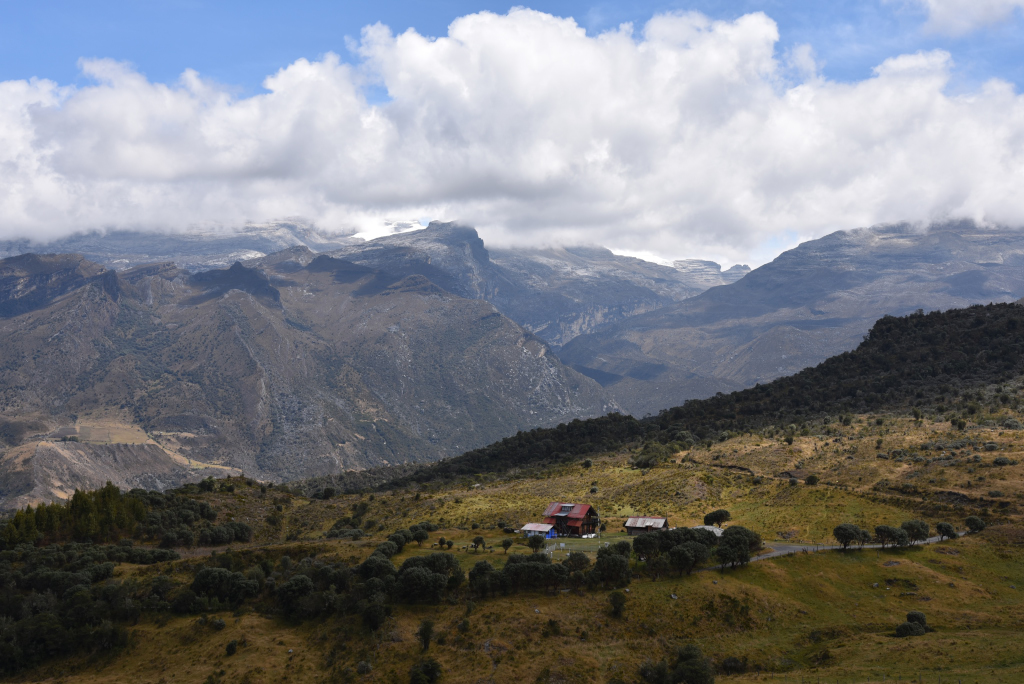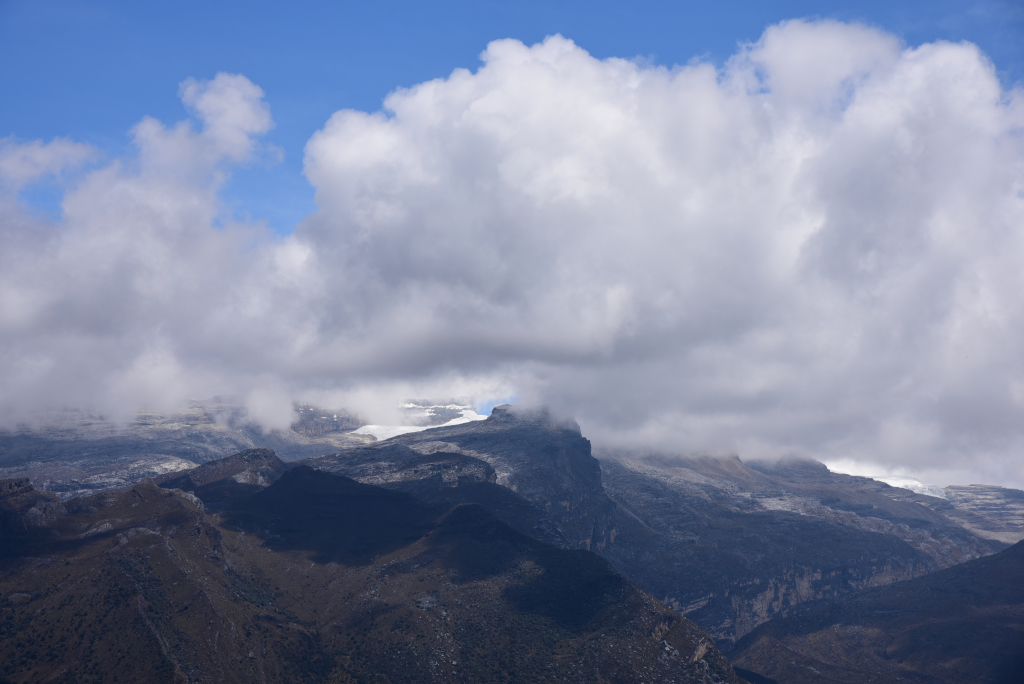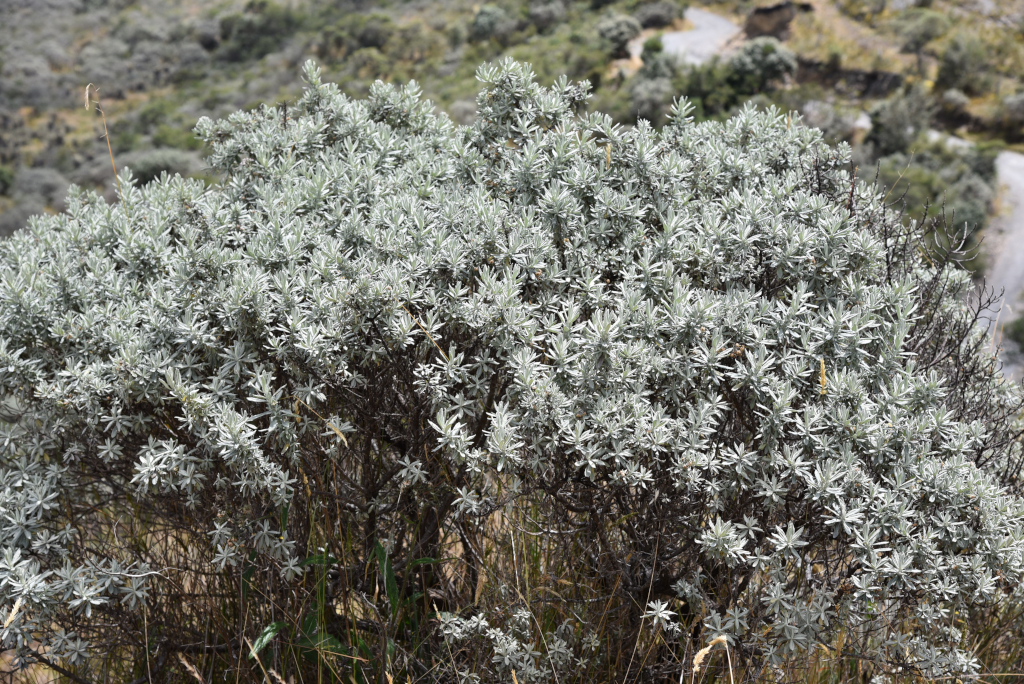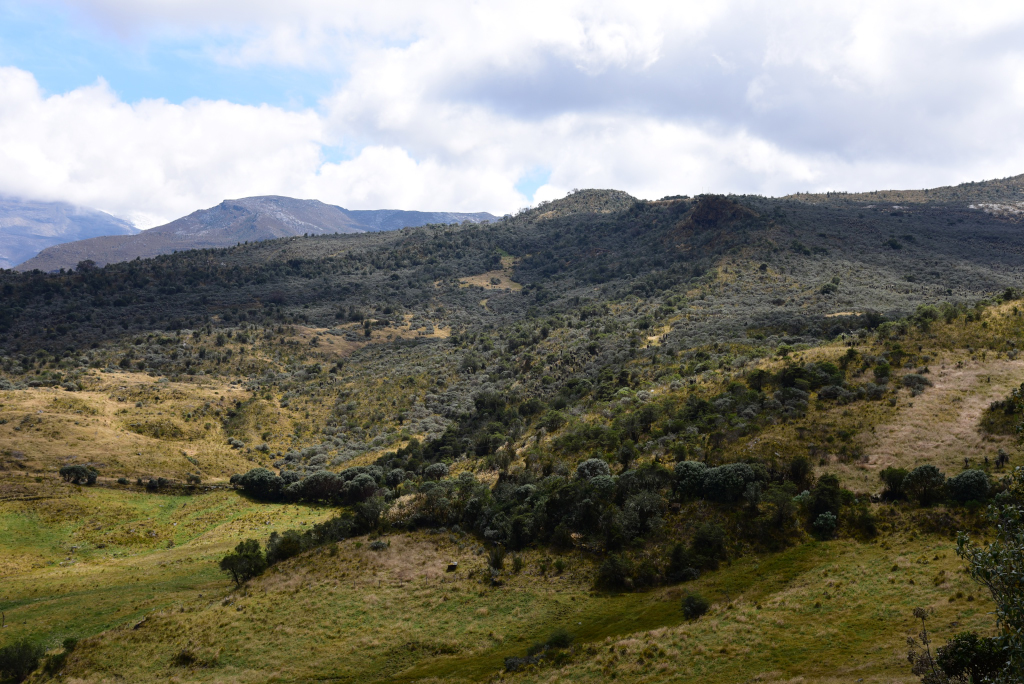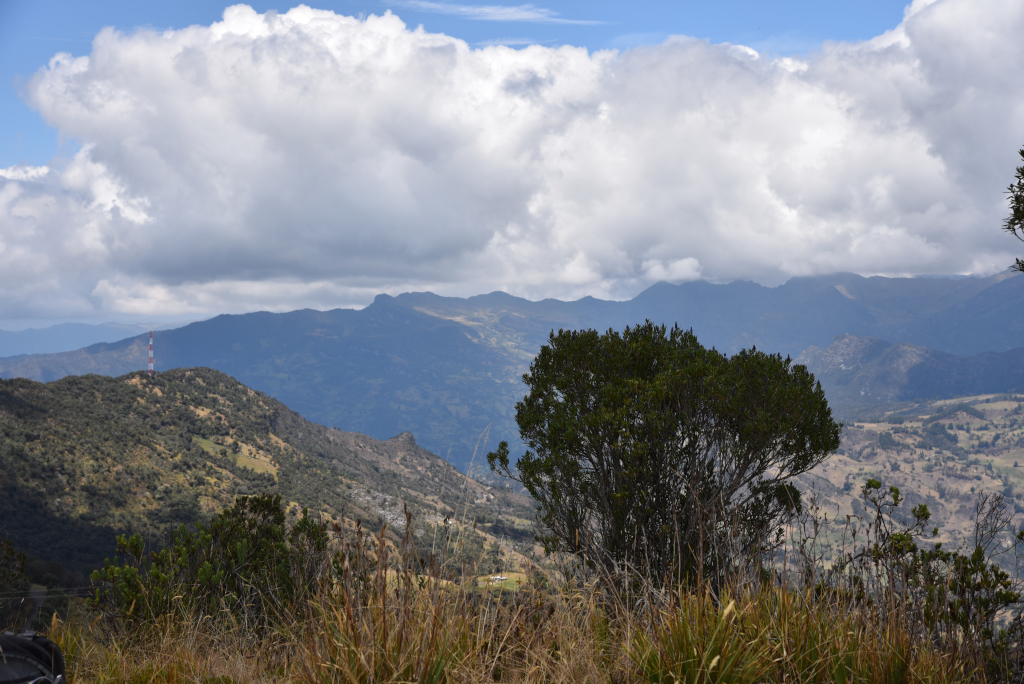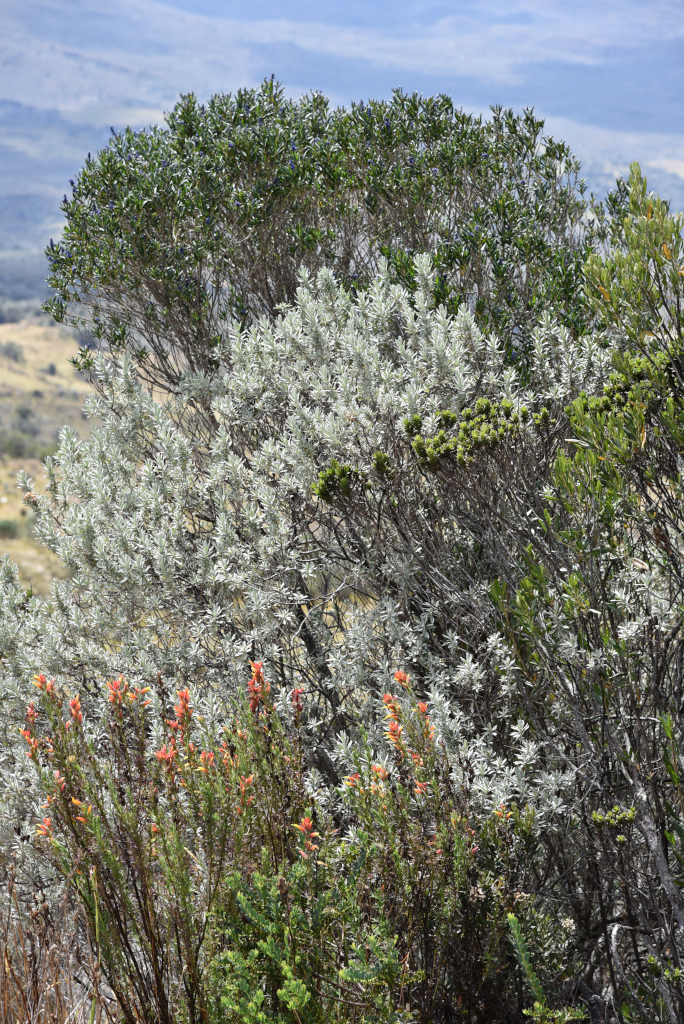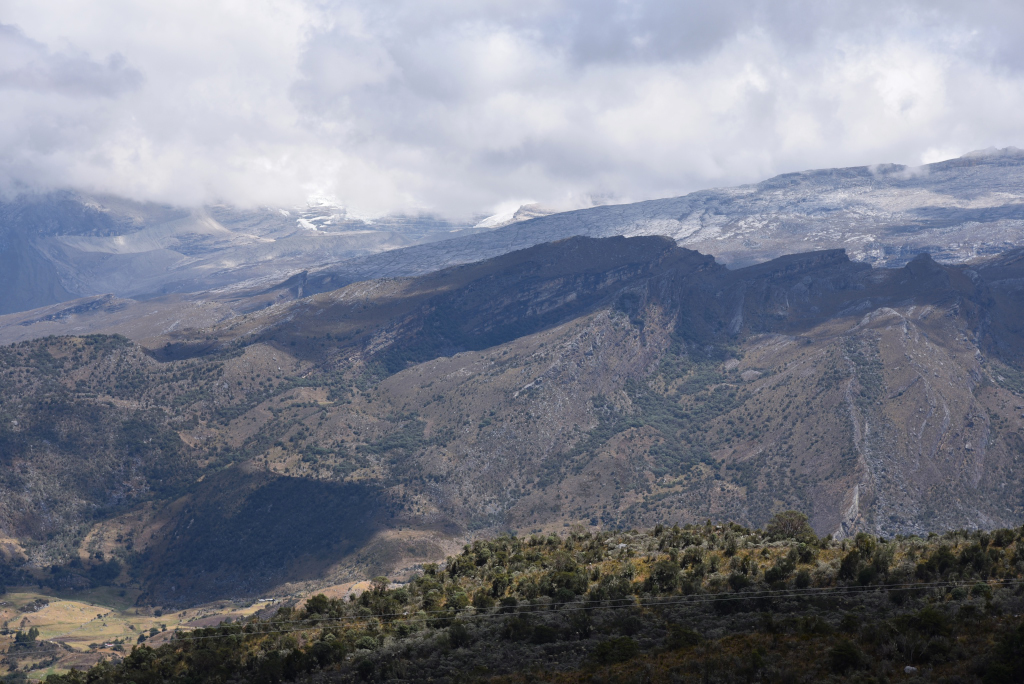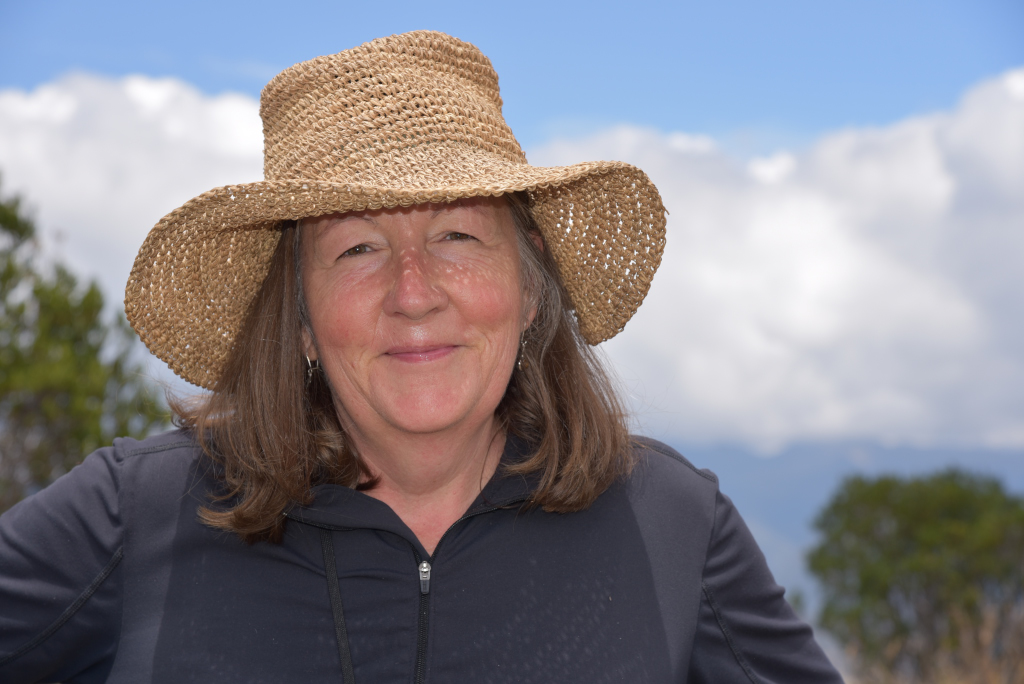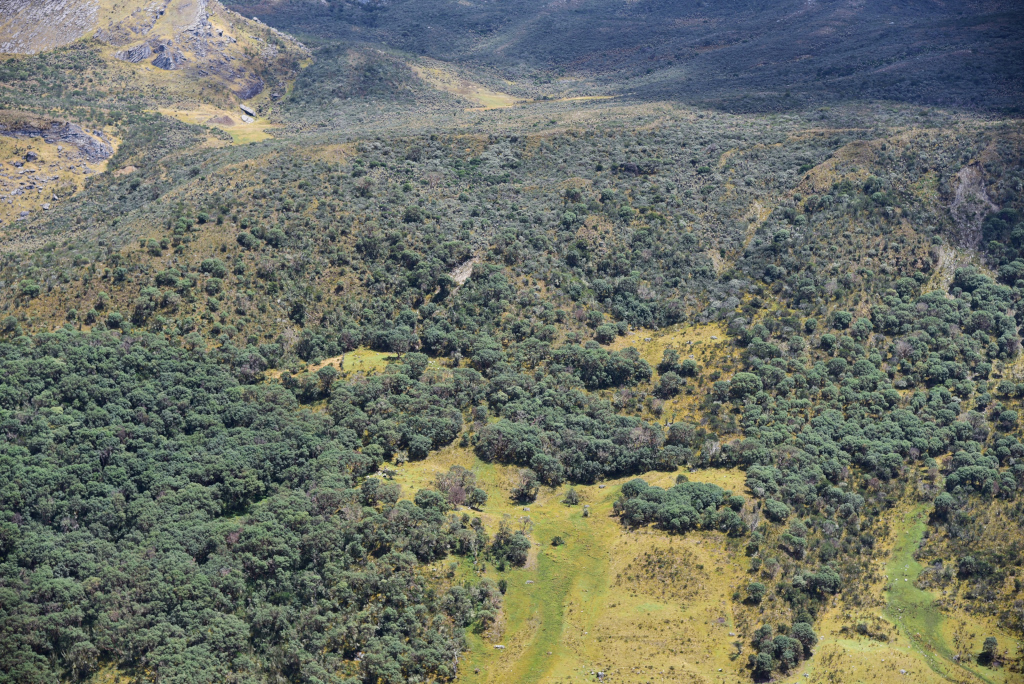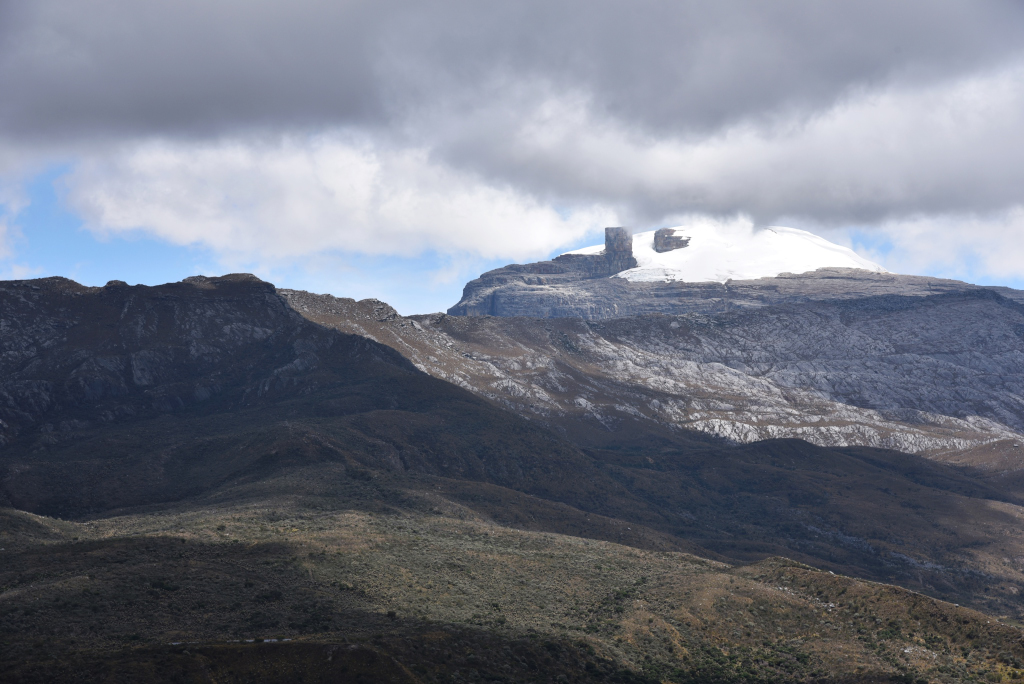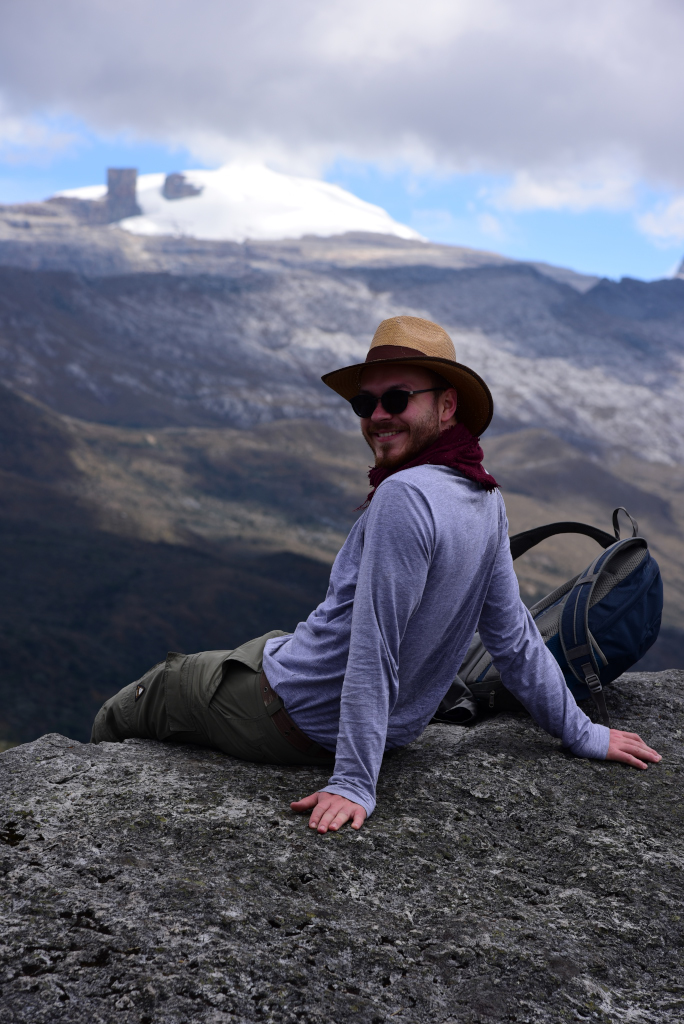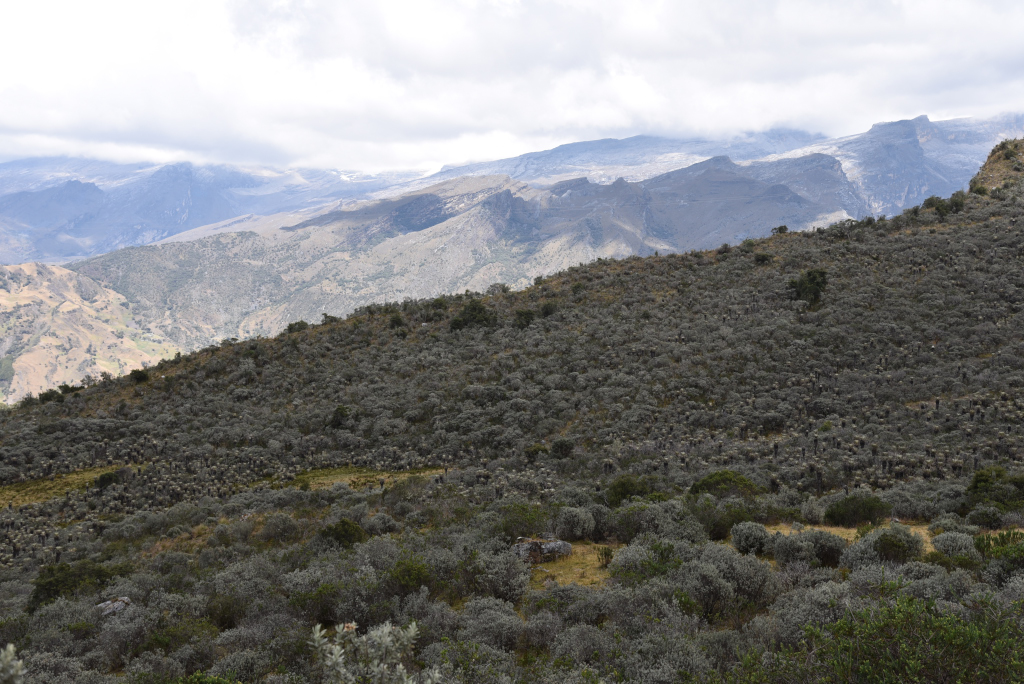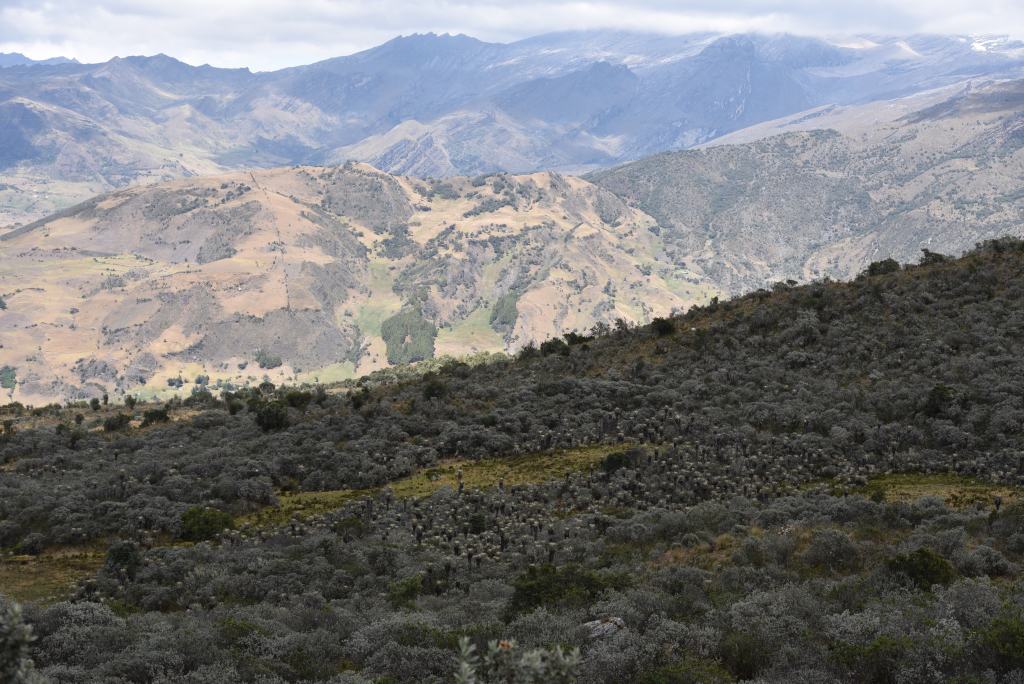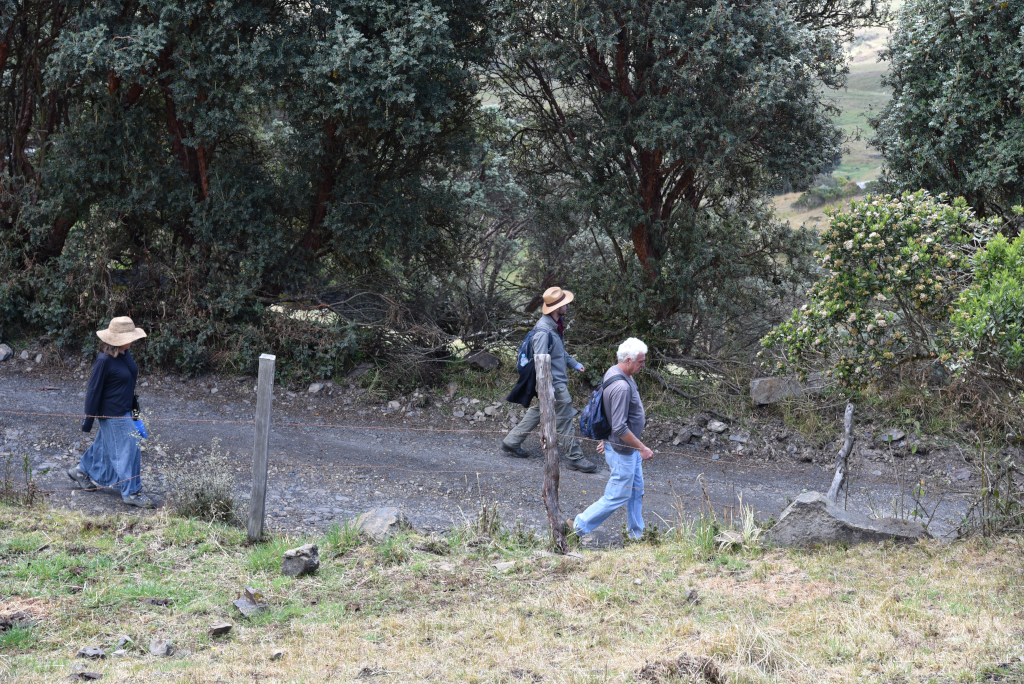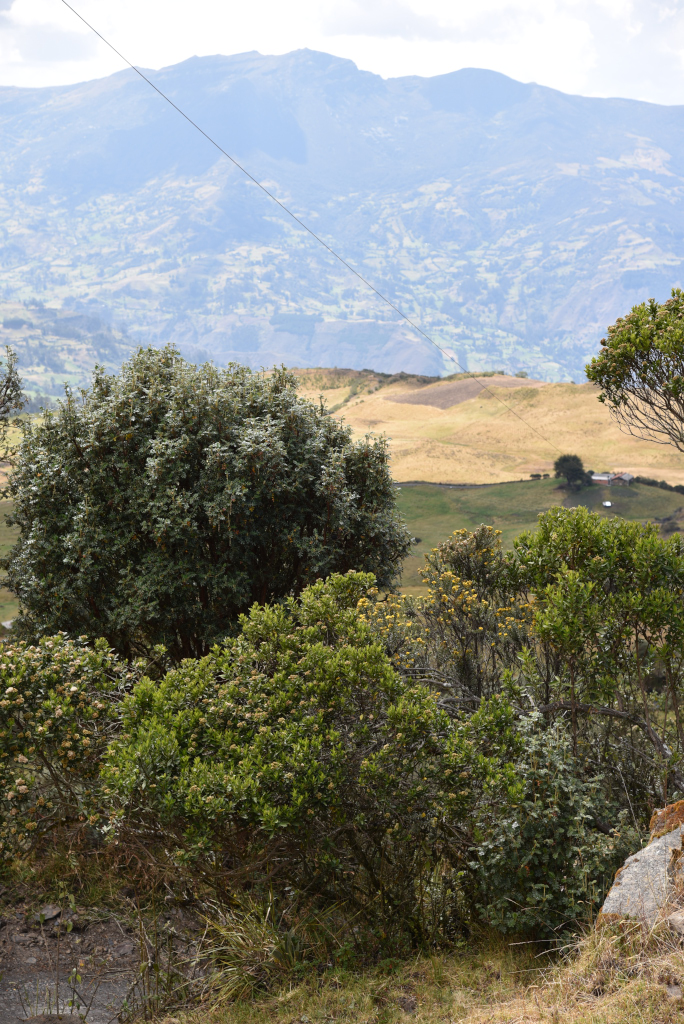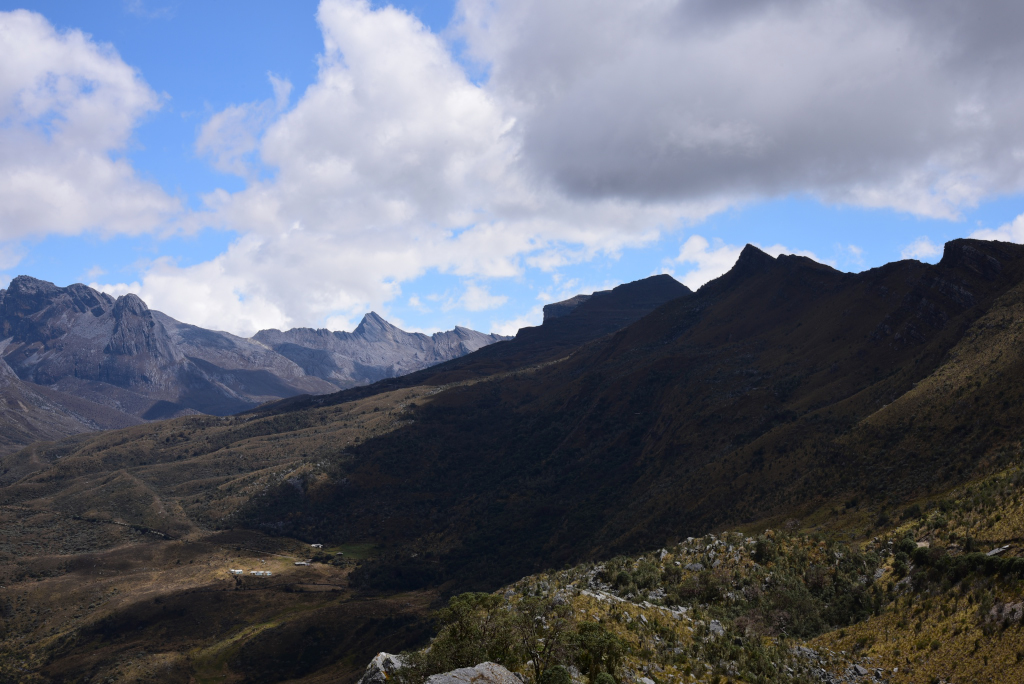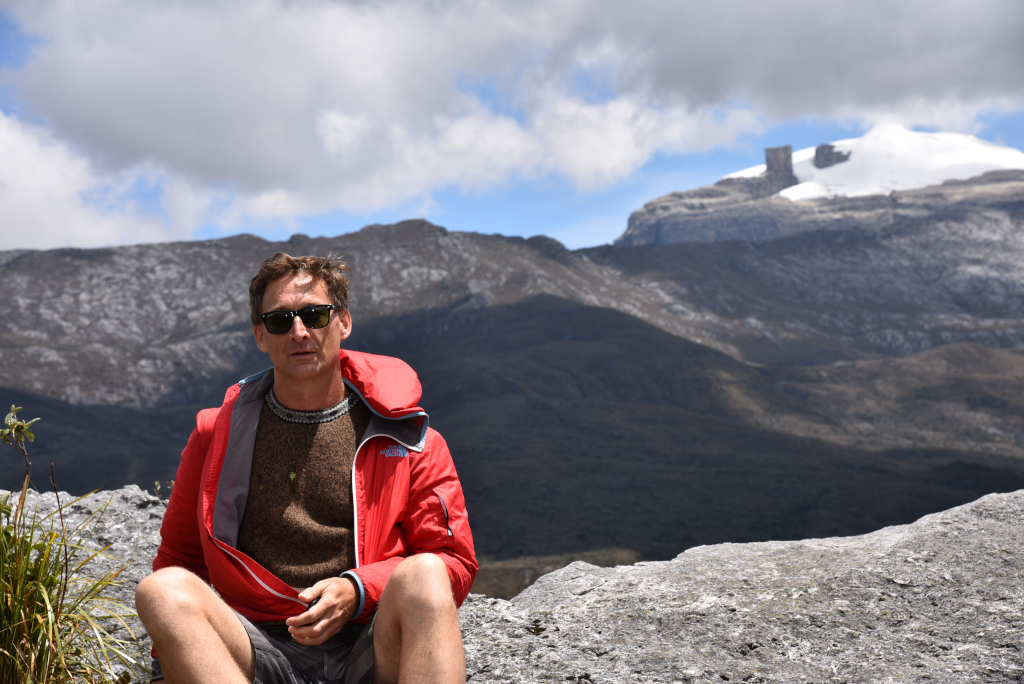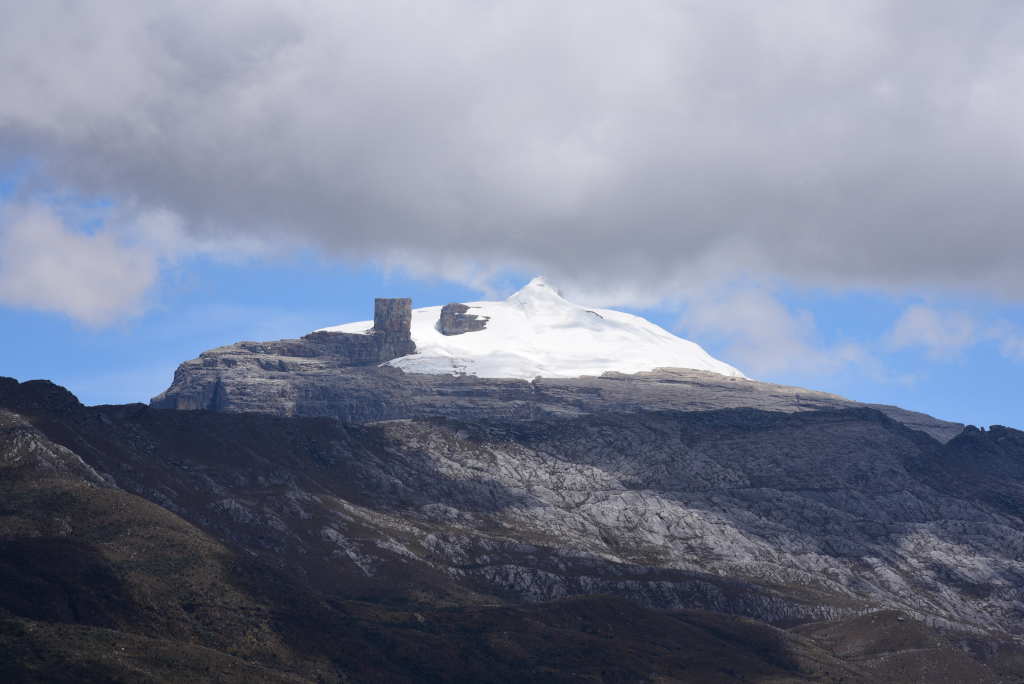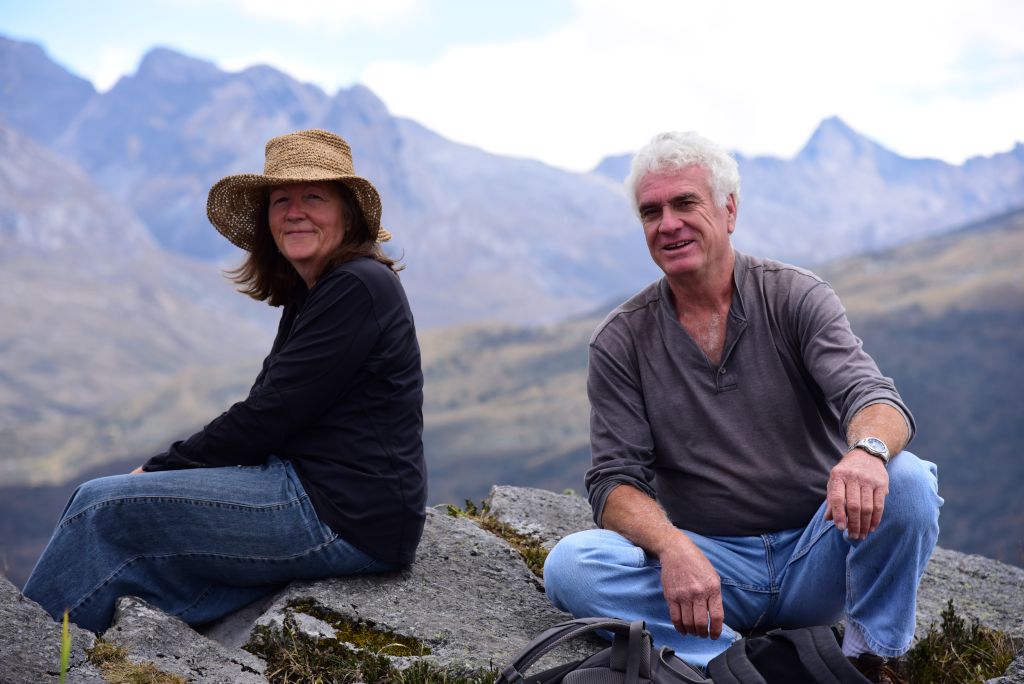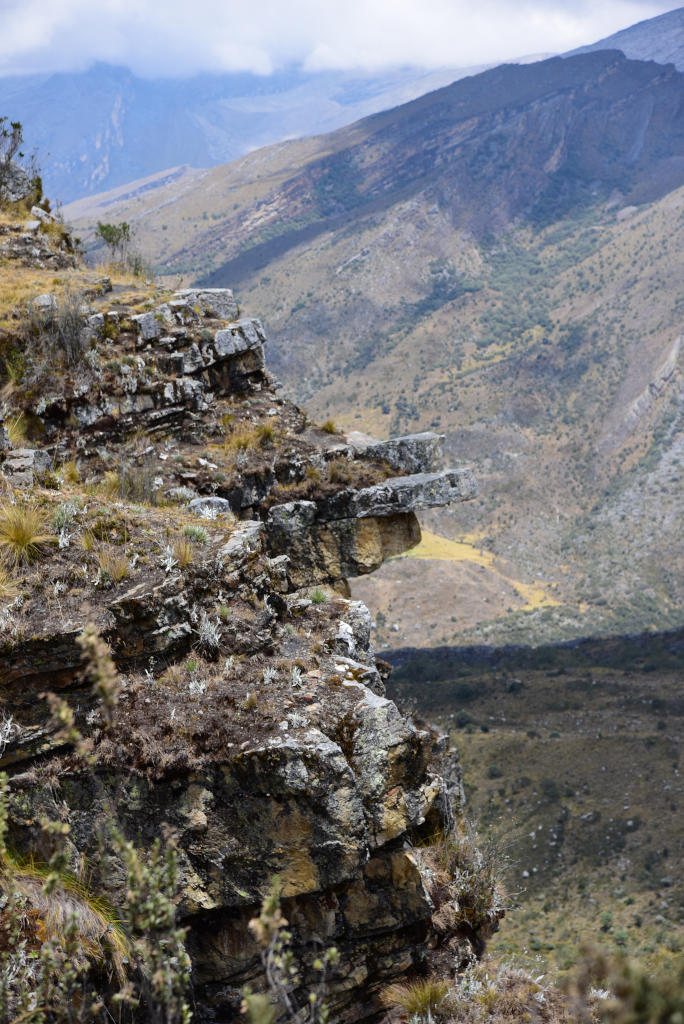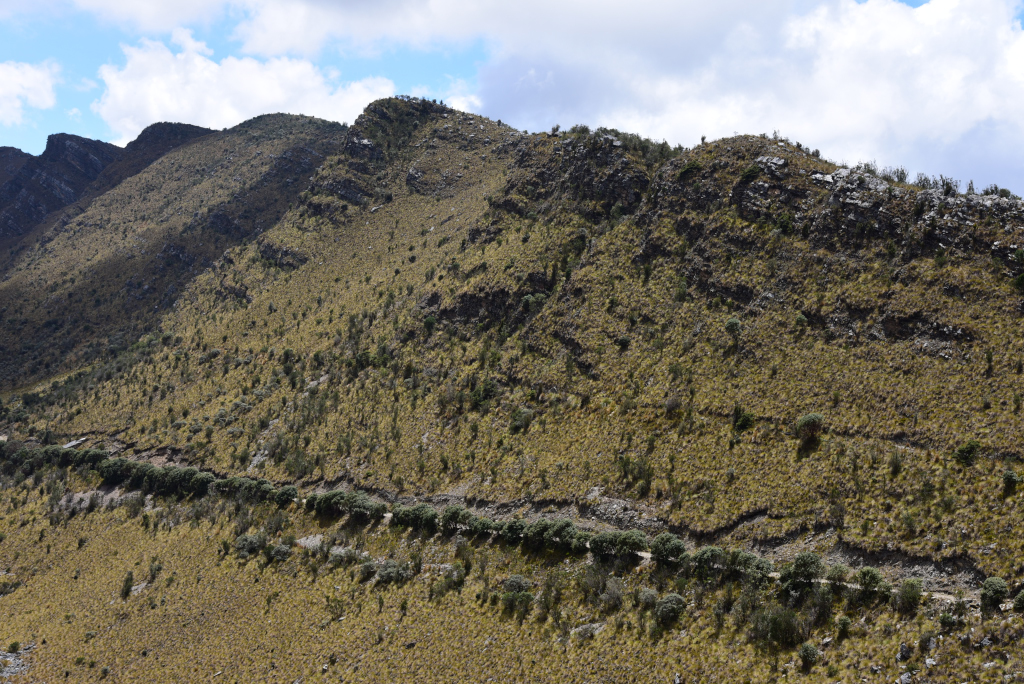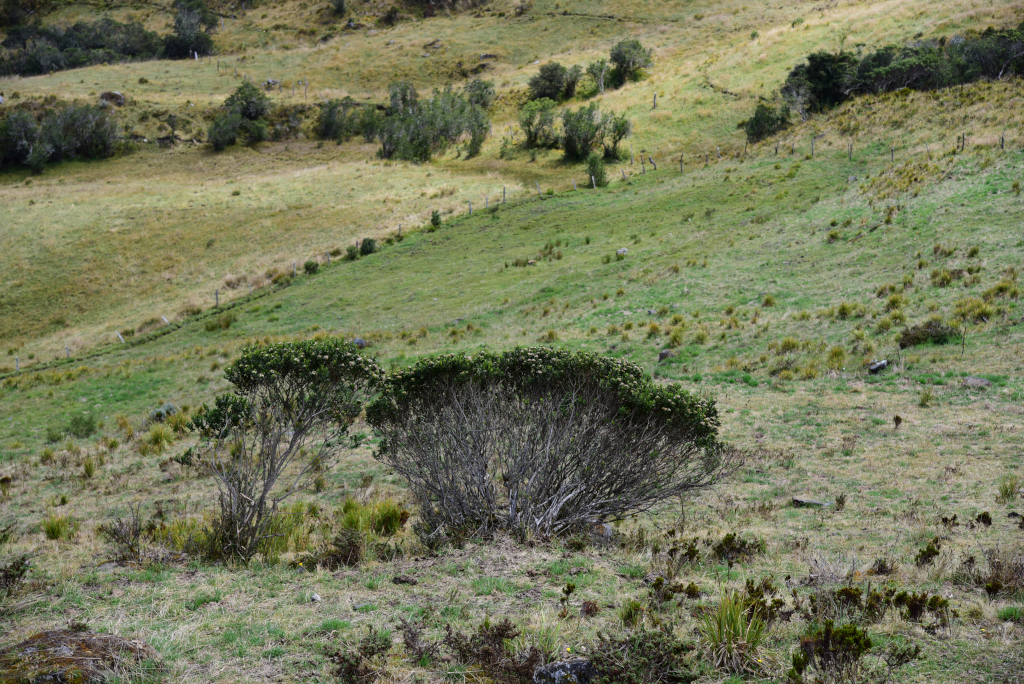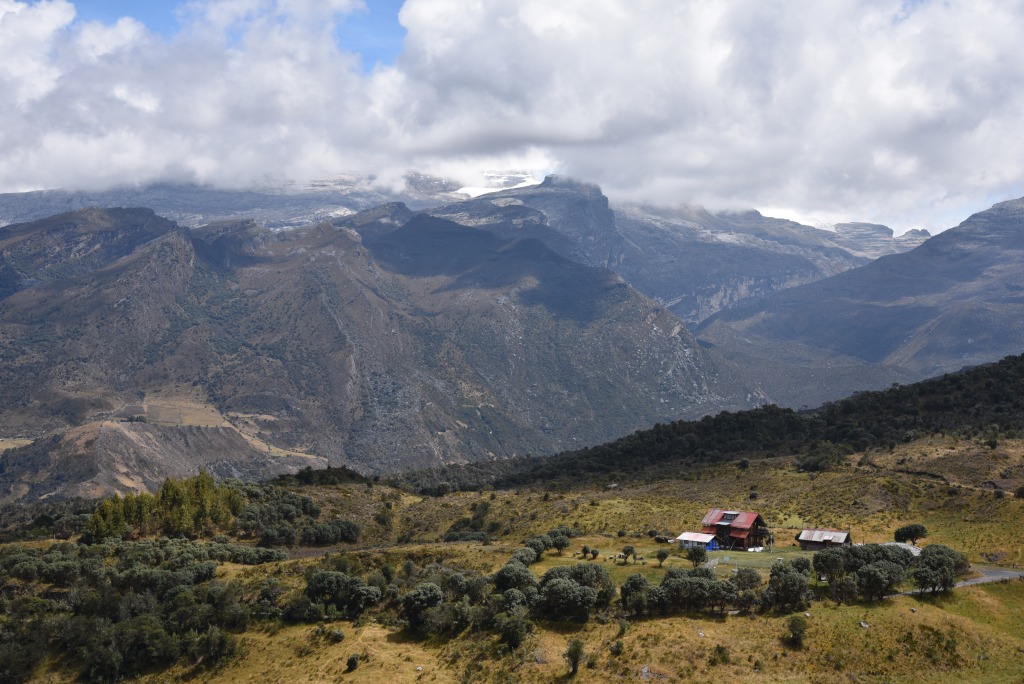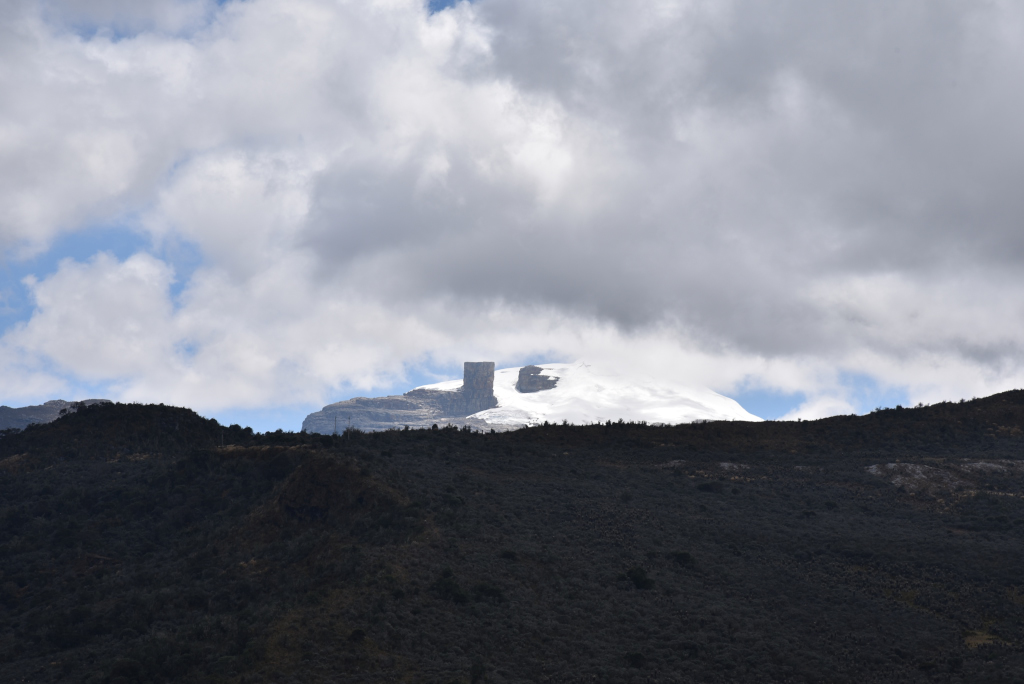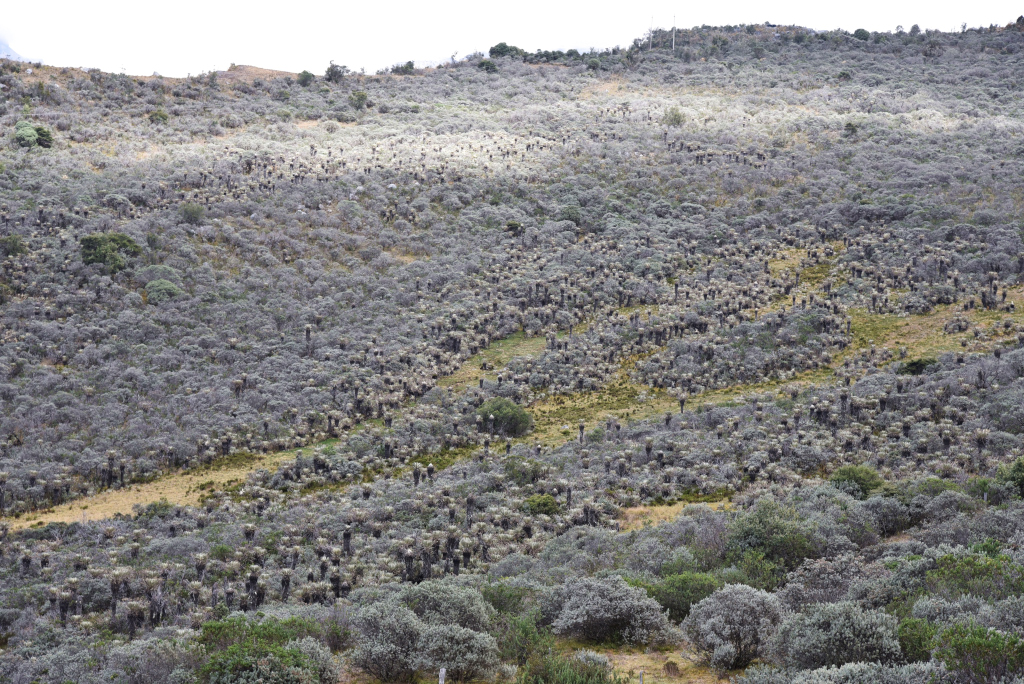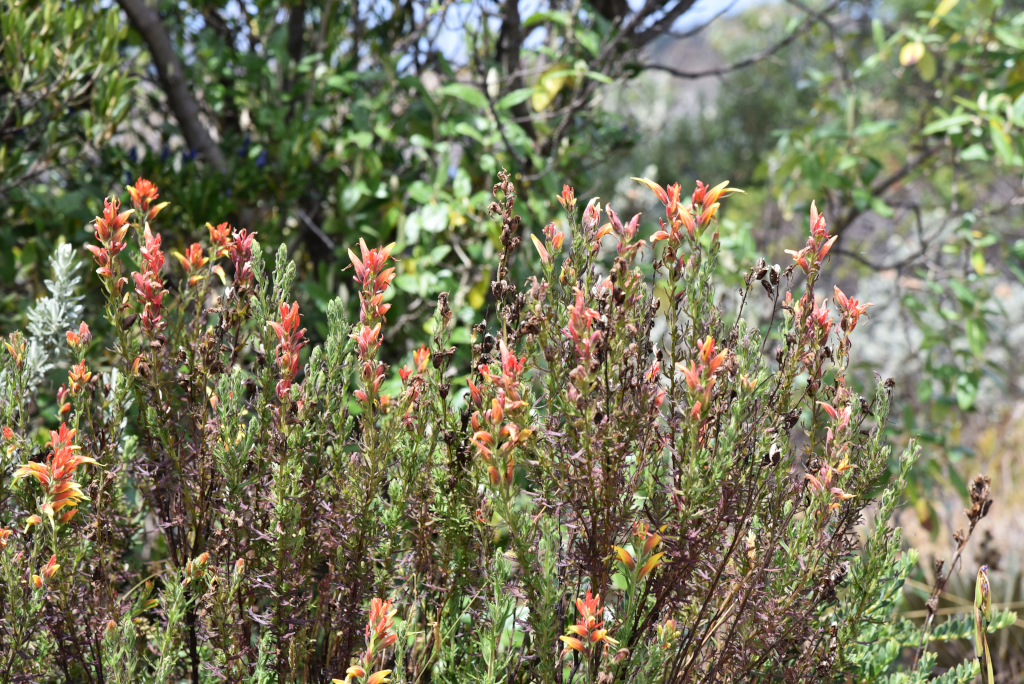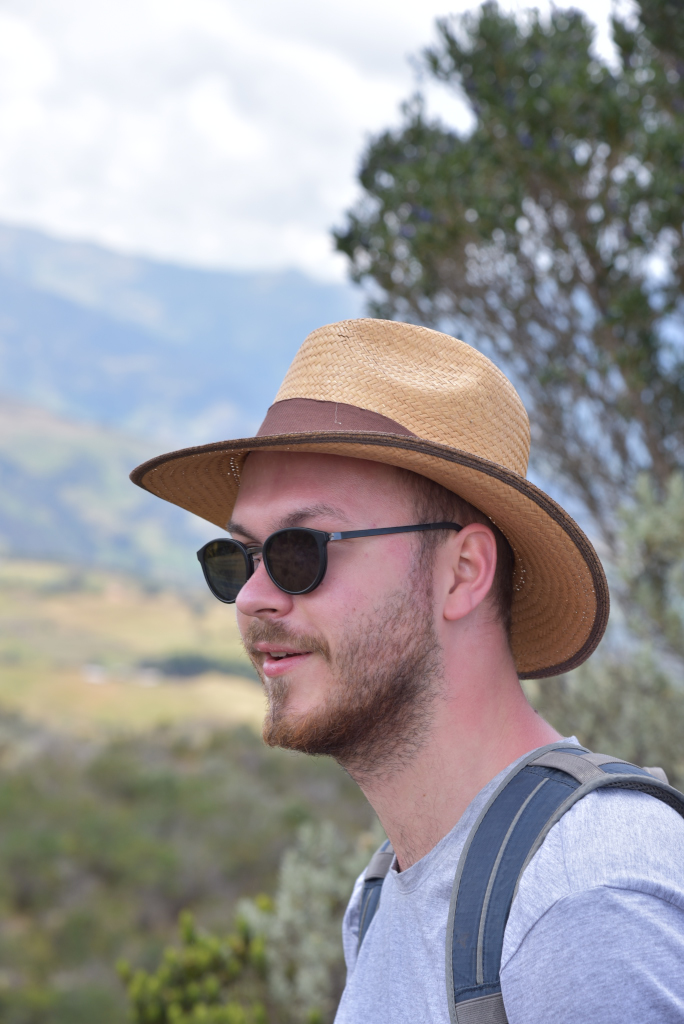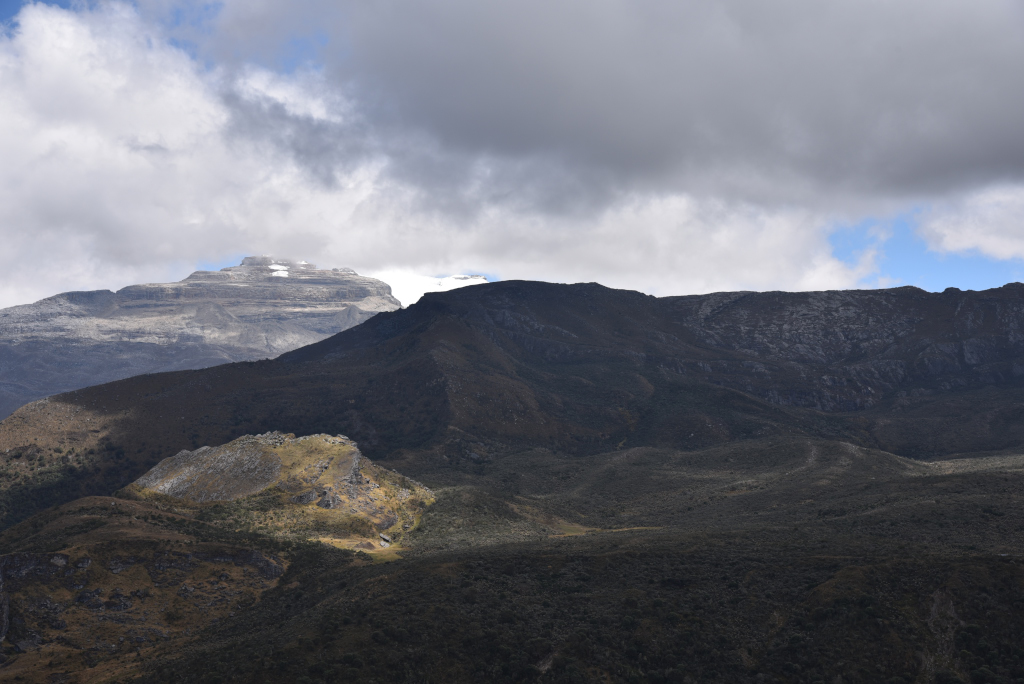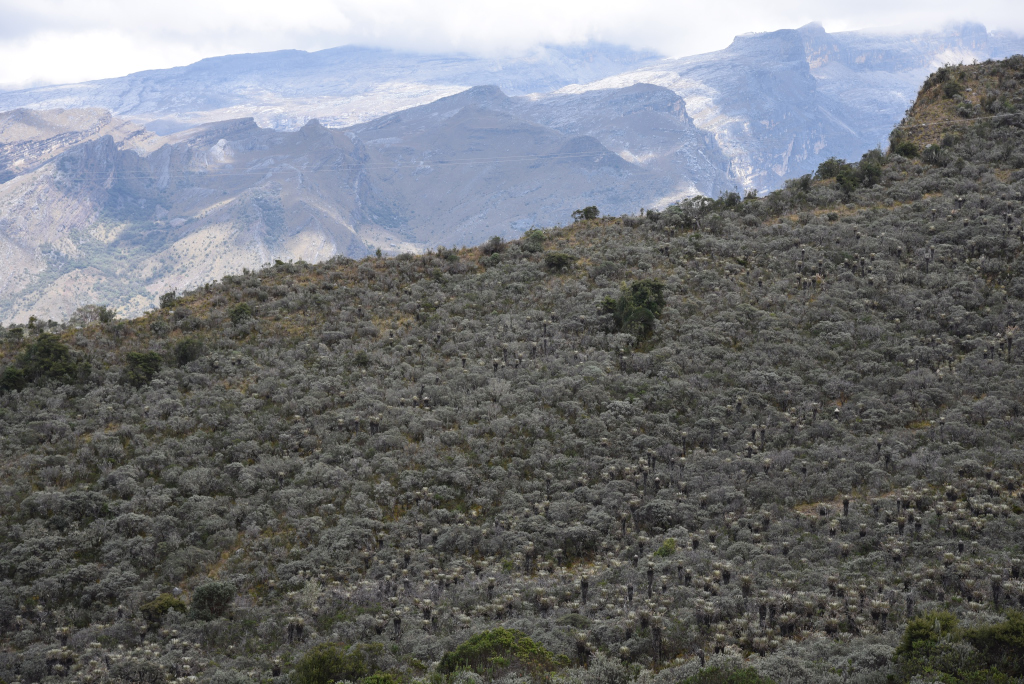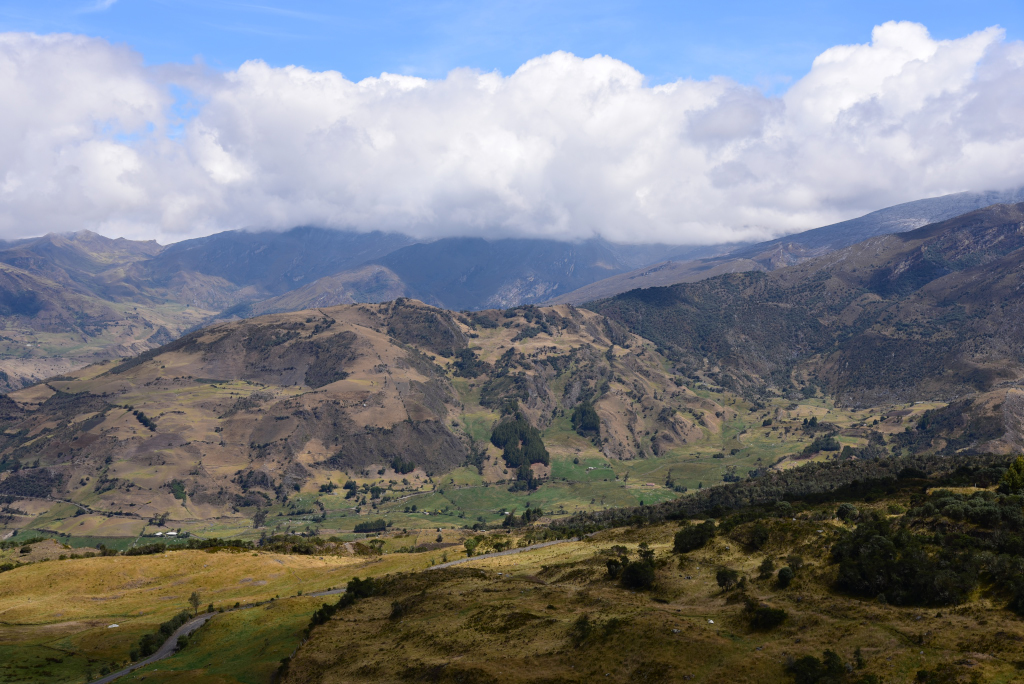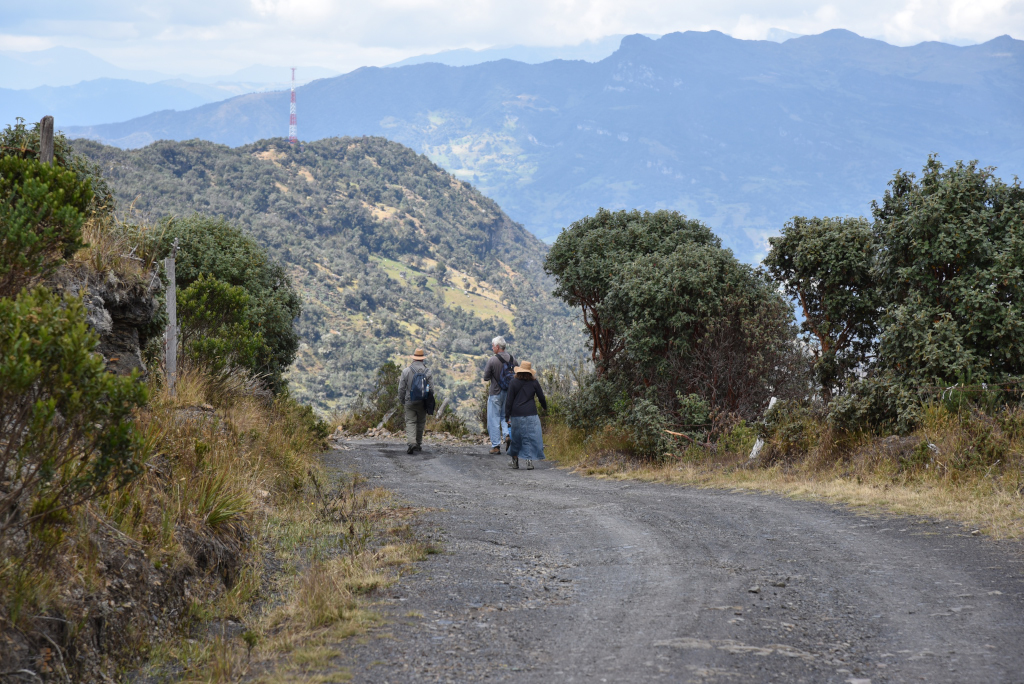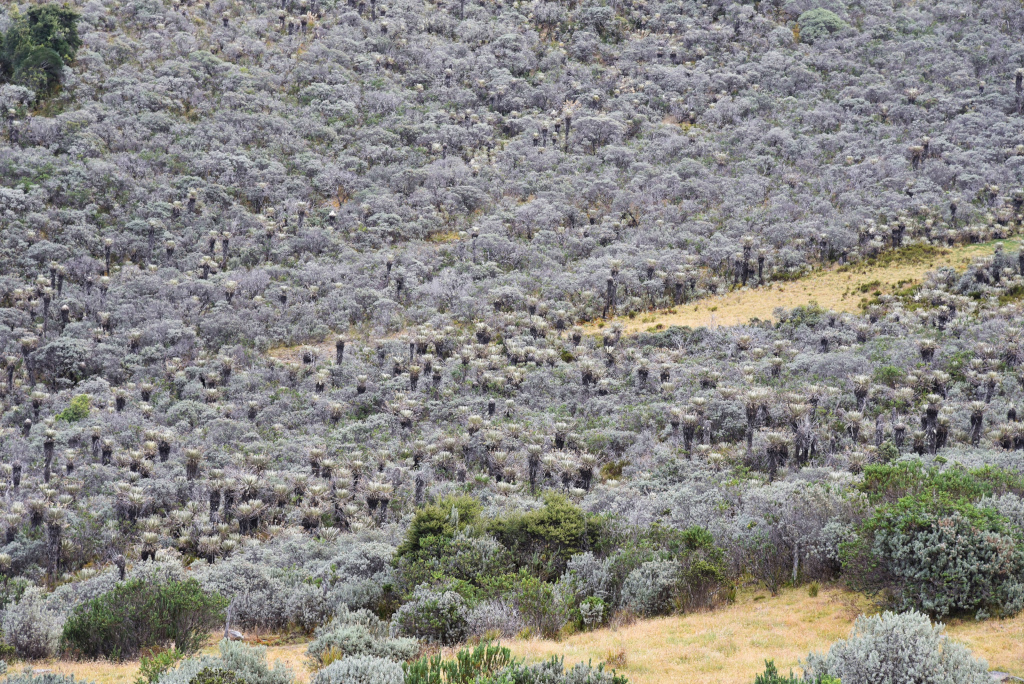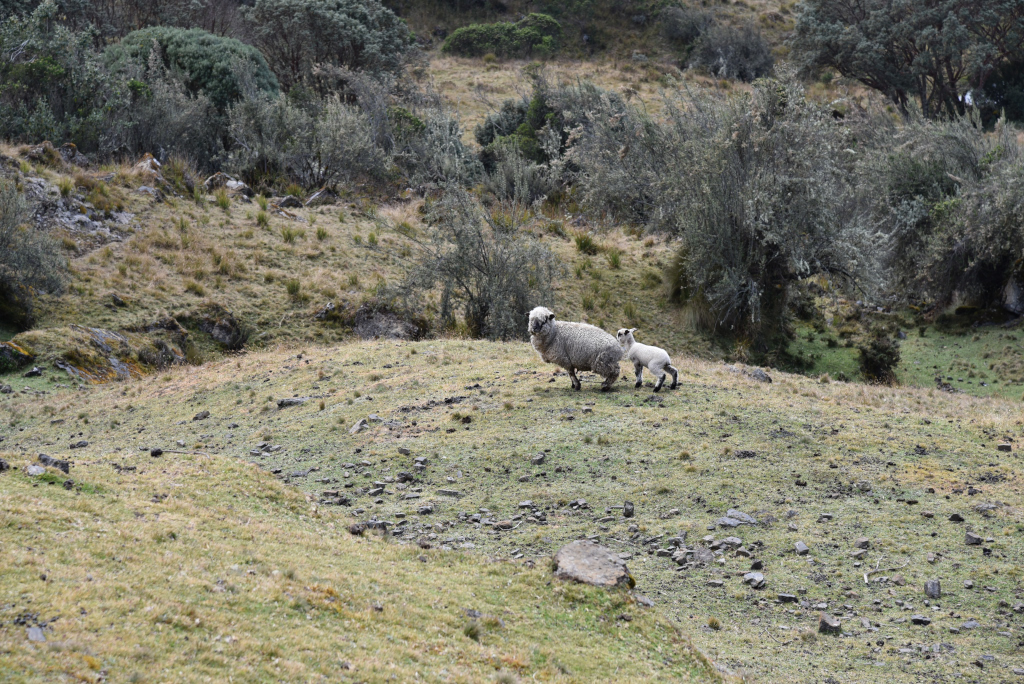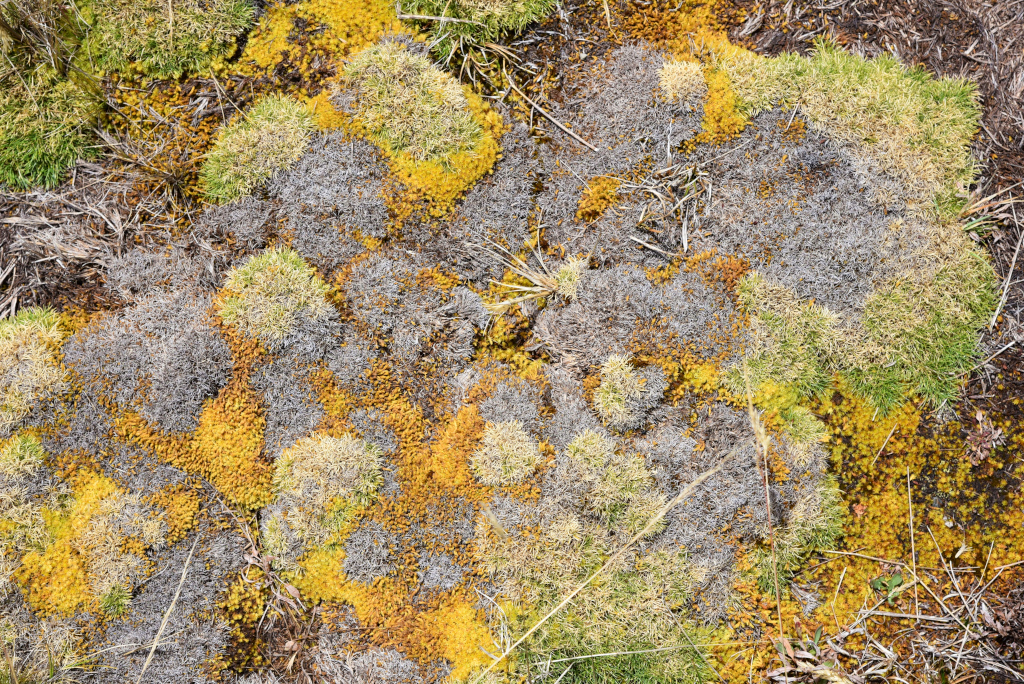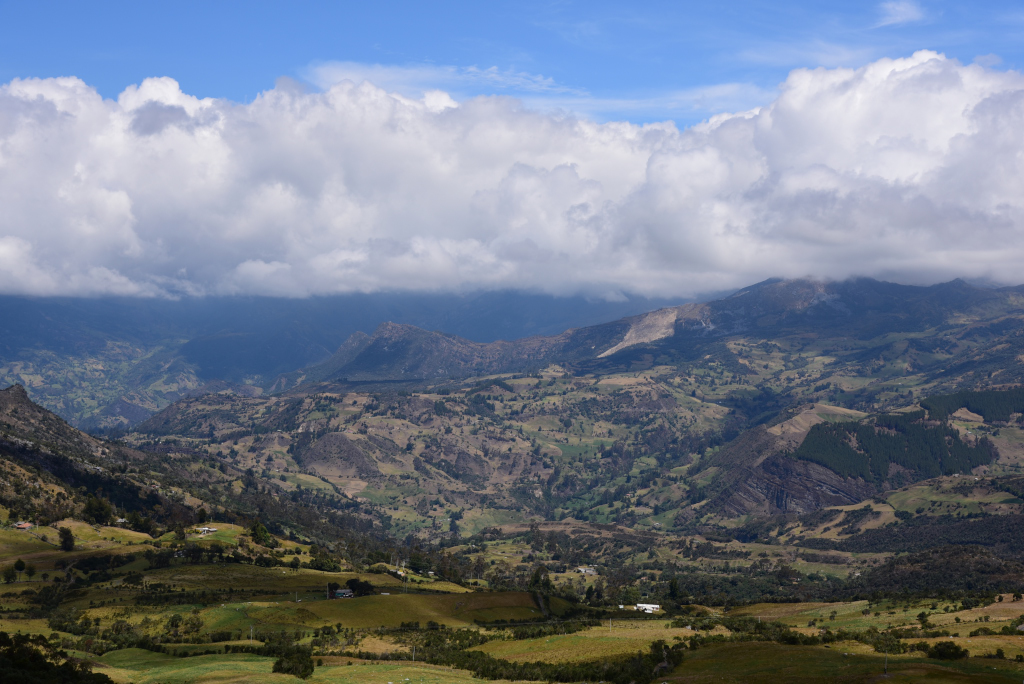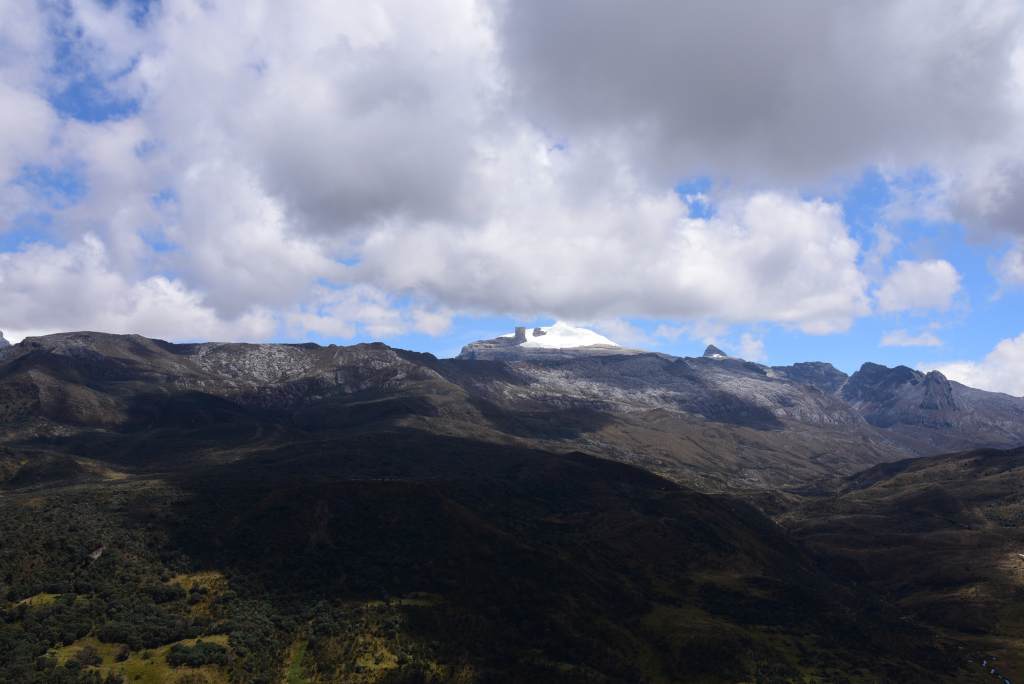February 18, 2018
The morning was again peaceful, sounds of other visitors waking up and leaving for the Parque Nacional Natural El Cocuy at earlier hours of the morning, my own relegated to writing assorted bits of trivia to populate my journal with. All I need to do at this point is have my things packed and be on the plaza by 10 am. My packing efforts are slowed by the fact that the bathroom is so tiny, and if I move too quickly, I risk injuring myself, damaging the bathroom, or both.
A coffee on the plaza, and I still need to buy some water. David, John and Kim appear, the next pieces of the puzzle falling into place. But the adjacent cafeteria only has three bottles of water. Another tienda on the way out of town has some more water and empanadas the woman swears by.
We weave El Cocuy, the visit to this somewhere bucolic, somewhere abandoned village ending too soon. We proceed in our friends’ SUV upwards along the narrow dirt road towards the park, the town dropping below and the undulating valleys typical for Boyacá spreading around us. The landscape looks similar to that in the south of the departamento, but the elevation here is far higher. And yet, the fields around us are green, replete with dairy cattle, small amounts of green cover and mostly exposed pasture.
David and Kim exchange quiet conversation, very easy going and thoughtful, while David is quiet. We talk about Americana, which obviously would exclude David, but then we are obviously here to take in the incredible scenery around us. We are intending on driving as far as the nearest set of cabañas, then walking towards the park entrance where the hike to the Pulpito begins. At every junction there is a sign, pointing either to some settlement or to the Sierra Nevada, the obvious choice being the Sierra Nevada. At the last curve of the dirt road, the majesty of the PNN Cocuy opens up before us, more of the high valleys we are traversing, but above, soaring snow-capped peaks, with cumulus stacks crowning from above.
We drive gingerly up to the cabañas, then embark on our hike, John quickly veering into the scrub that adjoins the road. We encounter a variety of bushes, ranging from roughly 5 to 10′ in height, including a lupine-like bush, an evergreen-like tree with peeling red bark, a bush with fine but fleshy leaf clusters the park warden later tells us is called Colorado, and freilejones. The exotic bushes are complimented with an almost heath-like backdrop, rich in a plethora of colourful fungi as well as mosses.
The valley below us is largely forested, somewhat unusual in the heavily agriculturally exploited landscape of Boyacá. The massive mountains lie across the valley, their peaks crowned in snow and graced with a choreography of cumulus clouds. Behind us, the tapestry of fincas and tree screens flowing over the hillsides and valleys that populate the typical vistas of Boyacá, crowned with a layer of thick cotton batting.
Apparently the Colorado bushes occur up to 4,000 metres, while the freilejones typically occur above 3,800 metres. It simply seems difficult to believe we are so high up. The view of the peaks in the distance is daunting, given that we know we will have very intense hikes ahead of us, beginning punishingly early. Even here, clambering along the shallow slope I am finding it somewhat difficult to breath, and yet in the next few days we will be gaining a kilometre in elevation, the air even far thinner at higher elevations.
At the park entrance, there is a mirador, from which we are offered the most awe-inspiring views of the deep valley that climbs from far below us up to the stunning peaks of the Parque Nacional Natural El Cocuy. Only the highest peaks of the park are covered in snow – who knows how much has been lost as a result of global warming. We sit on the rock ledges of the mirador, taking pictures and simply absorbing the majestic spectacle before us. The clouds gradually descend onto the mountain peaks, shifting across the valley and leaving stunning ephemeral imprints across the valley, a shifting landscape of light and dark and keeps us utterly engrossed.
A set of small ledges protruding from the adjacent rock face provide the perfect photo opportunity, although only David is feisty enough to risk standing on the open ledge. According to John, the rock forming these mountains is shale, thrown up from the collision of two geological plates. He picks up pieces of the black shale on the way back to the car, showing us how the rock breaks apart into increasingly finer segments.
A long drive awaits us, the serpentine dirt road rising higher and higher, weaving through the remote landscape of pastureland and tenuous agriculture, the rising elevation revealing a more barren environment. Occasionally we pass an abandoned-looking adobe house, and even more rarely, a ruddy-faced local draped in wool poncho, looking at us quizzically.
We unintentionally continue too far on the road towards Güicán, rather than turning up to the cabañas we were intended to stay in. Returning, we rise even higher, the road degenerating to uneven broken rock, then weaving to a rise, where we reach the local park entrance. The administrator or owner of the cabin has apparently left for Güicán, and who knows when he may come back.
We could try the cabañas further down in the valley, but they turn out to have only rudimentary accommodation, and no food. No, that isn’t good enough. We debate as to what course to follow, realizing that we missed one step, and that was to pre-book the cabañas. Oh well. The larger housing complex we passed earlier still awaits, which would require us to have to drive back to the park entrance. But now we have little choice.
We are offered only two rooms, the other two rooms reserved for other parties – that never appear. John and Kim take the bigger room, a courtesy I have no problem extending to them, given that they have made this visit to the park possible for David and I. But our room is smaller, with no privacy, and with virtually no space to put our belongings. Somewhat of an indignity, never mind the fact that the beds have nothing more than a few thin synthetic blankets, and by the time the evening rolls around, the temperature here is punishingly cold.
We are greeted very politely by the hostel staff. The sun still shines radiantly on us through the remainder of the afternoon, but the clouds that have broached the snow-capped peaks are now descending into the valley, dusk heralded by an eerie, golden haze, the sun shining through the cloud that has now swallowed the depression the cabin is located in.
I chat at length with the Americans about the state of the U.S., attempting to provide somewhat of a more philosophical perspective to their own more sombre assessment. John and Kim are unflinching in their views of the United States: the issues of slavery and genocide that the country was founded on were never resolved – they were ignored and everyone just moved on. They will never be able to progress without addressing these issues. Yet there is a side of America that is so volcanic, reflected in its literature, music and art, a culture that is as vibrant as the country is troubled.
And the country has never been a paragon of equity, calm, or peace, lunging from one troubled period to the next. The challenges facing the United States and its people are daunting – then it is also so much of a collage of disparate peoples and regions. A possible solution is to concentrate on one’s own lives, one’s own region. John in particular is wanting to move from construction into full-fledged organic apple farming, which I think is an eminently noble effort.

